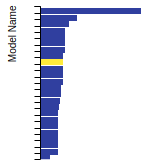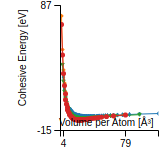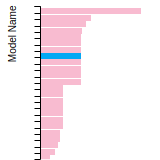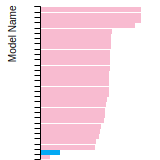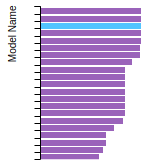 MEAM_LAMMPS_LeeLee_2014_ZrH__MO_946208788356_002
MEAM_LAMMPS_LeeLee_2014_ZrH__MO_946208788356_002
| Title
A single sentence description.
|
MEAM Potential for the Zr-H system developed by Lee and Lee (2014) v002 |
|---|---|
| Description
A short description of the Model describing its key features including for example: type of model (pair potential, 3-body potential, EAM, etc.), modeled species (Ac, Ag, ..., Zr), intended purpose, origin, and so on.
|
The modified embedded-atom method (MEAM) interatomic potential for the Zr-H binary system is developed for the atomistic simulation. |
| Species
The supported atomic species.
| H, Zr |
| Disclaimer
A statement of applicability provided by the contributor, informing users of the intended use of this KIM Item.
|
None |
| Content Origin | http://cmse.postech.ac.kr/home_2nnmeam |
| Contributor |
Jong-Kwan Lee |
| Maintainer |
Jong-Kwan Lee |
| Developer |
Byeong-Moon Lee Byeong-Joo Lee |
| Published on KIM | 2023 |
| How to Cite |
This Model originally published in [1] is archived in OpenKIM [2-5]. [1] Lee B-M, Lee B-J. A comparative study on hydrogen diffusion in amorphous and crystalline metals using a molecular dynamics simulation. Metallurgical and Materials Transactions A. 2014;45(6):2906–15. doi:10.1007/s11661-014-2230-4 — (Primary Source) A primary source is a reference directly related to the item documenting its development, as opposed to other sources that are provided as background information. [2] Lee B-M, Lee B-J. MEAM Potential for the Zr-H system developed by Lee and Lee (2014) v002. OpenKIM; 2023. doi:10.25950/a632f4e5 [3] Afshar Y, Hütter S, Rudd RE, Stukowski A, Tipton WW, Trinkle DR, et al. The modified embedded atom method (MEAM) potential v002. OpenKIM; 2023. doi:10.25950/ee5eba52 [4] Tadmor EB, Elliott RS, Sethna JP, Miller RE, Becker CA. The potential of atomistic simulations and the Knowledgebase of Interatomic Models. JOM. 2011;63(7):17. doi:10.1007/s11837-011-0102-6 [5] Elliott RS, Tadmor EB. Knowledgebase of Interatomic Models (KIM) Application Programming Interface (API). OpenKIM; 2011. doi:10.25950/ff8f563a Click here to download the above citation in BibTeX format. |
| Citations
This panel presents information regarding the papers that have cited the interatomic potential (IP) whose page you are on. The OpenKIM machine learning based Deep Citation framework is used to determine whether the citing article actually used the IP in computations (denoted by "USED") or only provides it as a background citation (denoted by "NOT USED"). For more details on Deep Citation and how to work with this panel, click the documentation link at the top of the panel. The word cloud to the right is generated from the abstracts of IP principle source(s) (given below in "How to Cite") and the citing articles that were determined to have used the IP in order to provide users with a quick sense of the types of physical phenomena to which this IP is applied. The bar chart shows the number of articles that cited the IP per year. Each bar is divided into green (articles that USED the IP) and blue (articles that did NOT USE the IP). Users are encouraged to correct Deep Citation errors in determination by clicking the speech icon next to a citing article and providing updated information. This will be integrated into the next Deep Citation learning cycle, which occurs on a regular basis. OpenKIM acknowledges the support of the Allen Institute for AI through the Semantic Scholar project for providing citation information and full text of articles when available, which are used to train the Deep Citation ML algorithm. |
This panel provides information on past usage of this interatomic potential (IP) powered by the OpenKIM Deep Citation framework. The word cloud indicates typical applications of the potential. The bar chart shows citations per year of this IP (bars are divided into articles that used the IP (green) and those that did not (blue)). The complete list of articles that cited this IP is provided below along with the Deep Citation determination on usage. See the Deep Citation documentation for more information. 
34 Citations (28 used)
Help us to determine which of the papers that cite this potential actually used it to perform calculations. If you know, click the .
USED (high confidence) A. L. Lloyd et al., “Modelling the effect of hydrogen on crack growth in zirconium,” Nuclear Instruments and Methods in Physics Research Section B: Beam Interactions with Materials and Atoms. 2019. link Times cited: 12 USED (low confidence) Y. Xu, S. Ma, Y. Peng, and Z. Wang, “Effect of structural disorder on the oxidation of Zr-based amorphous alloys: a focused review,” Journal of Alloys and Compounds. 2023. link Times cited: 0 USED (low confidence) A. Gupta et al., “Enhanced hydrogen storage in Mg catalysed by Cu–Ni–Co–Fe quaternary multi-component alloy,” International Journal of Hydrogen Energy. 2023. link Times cited: 1 USED (low confidence) S. Pan, C. Li, T. Xiong, Y. Xie, F. Luo, and Z. Yang, “Hydrogen spillover in MoOxRh hierarchical nanosheets boosts alkaline HER catalytic activity,” Applied Catalysis B: Environmental. 2023. link Times cited: 3 USED (low confidence) C. Yipyintum, J. Y. Lee, J.-Y. Suh, and B. Lohwongwatana, “Hydride formation mechanisms in Zr-containing amorphous alloys during sample preparation and atom probe tomography,” Materials Testing. 2023. link Times cited: 0 Abstract: Hydride formation in Zr-containing amorphous alloys as an ex… read more USED (low confidence) H. Ghaffarian and D. Jang, “Deformation mechanism of embedded hydride within the polycrystalline zirconium matrix,” Journal of Nuclear Materials. 2022. link Times cited: 4 USED (low confidence) Y. Teng, Y. Song, S. Xie, and Z. Sha, “On the deformation and failure mechanisms of hydrogen alloyed metallic glasses,” Journal of Applied Physics. 2022. link Times cited: 6 Abstract: While microalloying of metallic glasses (MGs) using hydrogen… read more USED (low confidence) C. Tang, G. Sun, and Y. Liu, “Is hydrogen diffusion in amorphous metals non-Arrhenian?,” International Journal of Hydrogen Energy. 2022. link Times cited: 3 USED (low confidence) Y. Song, Y. Teng, and Z. Sha, “Hydrogen induced cracking in metallic glasses,” Journal of Applied Physics. 2021. link Times cited: 3 USED (low confidence) Q. Kang et al., “Modification mechanism of collaborative ions implanted into 4H-SiC by atomic simulation and experiment,” International Journal of Mechanical Sciences. 2021. link Times cited: 9 USED (low confidence) P. Lin, K. F. Lin, C. Chiu, V. Semenov, H. Lin, and M. Chen, “Effect of atomic layer plasma treatment on TALD-ZrO2 film to improve the corrosion protection of mg Ca alloy,” Surface and Coatings Technology. 2021. link Times cited: 3 USED (low confidence) R. Skelton, X. W. Zhou, and R. Karnesky, “Molecular dynamics studies of lattice defect effects on tritium diffusion in zirconium,” Journal of Nuclear Materials. 2021. link Times cited: 2 USED (low confidence) Y. Xu et al., “Revealing the univariate effect of structural order on the oxidation of ternary alloys: Amorphous vs. crystalline Cu–Zr–Al alloys,” Corrosion Science. 2021. link Times cited: 6 USED (low confidence) S. Samanta, C. Singh, A. Banerjee, K. Mondal, M. Dutta, and S. Singh, “Development of amorphous Ni-P coating over API X70 steel for hydrogen barrier application,” Surface & Coatings Technology. 2020. link Times cited: 20 USED (low confidence) J. Wang and B.-J. Lee, “Second-nearest-neighbor modified embedded-atom method interatomic potential for V-M (M = Cu, Mo, Ti) binary systems,” Computational Materials Science. 2020. link Times cited: 10 USED (low confidence) B.-bin Wang et al., “Impact of hydrogen microalloying on the mechanical behavior of Zr-bearing metallic glasses: A molecular dynamics study,” Journal of Materials Science & Technology. 2020. link Times cited: 13 USED (low confidence) H. Ghaffarian and D. Jang, “Plastic deformation of bi-crystalline Zr-ZrH2,” Journal of Nuclear Materials. 2020. link Times cited: 3 USED (low confidence) Y. Xu, L. Jeurgens, Y. Huang, C. Li, Y.-chang Liu, and Z. Wang, “Effect of structural order on oxidation kinetics and oxide phase evolution of Al–Zr alloys,” Corrosion Science. 2020. link Times cited: 13 USED (low confidence) Y. Xu et al., “Effect of atomic structure on preferential oxidation of alloys: amorphous versus crystalline Cu-Zr,” Journal of Materials Science & Technology. 2020. link Times cited: 17 USED (low confidence) Y. Xu et al., “Thermal oxidation of amorphous Cu Zr1− alloys: Role of composition-dependent thermodynamic stability,” Applied Surface Science. 2020. link Times cited: 9 USED (low confidence) A. Tehranchi and W. Curtin, “The role of atomistic simulations in probing hydrogen effects on plasticity and embrittlement in metals,” Engineering Fracture Mechanics. 2019. link Times cited: 43 USED (low confidence) C. I. Maxwell, E. Torres, and J. Pencer, “Molecular dynamics study of hydrogen-vacancy interactions in α-zirconium,” Journal of Nuclear Materials. 2018. link Times cited: 12 USED (low confidence) Y. Liu, W. Liu, J. Hou, Y. Dai, and J. Yang, “Coronoid nanographene C216 as hydrogen purification membrane: A density functional theory study,” Carbon. 2018. link Times cited: 6 USED (low confidence) L. Liang, J. Zhang, Y. Xu, Y. Zhang, W. Wang, and J. Yang, “The effect of pressure and orientation on Cu-Cu3Sn interface reliability under isothermal ageing and monotonic traction via molecular dynamics investigation,” Materials & Design. 2018. link Times cited: 15 USED (low confidence) J. O. Fadonougbo, J.-Y. Suh, C.-H. Shim, G. Kim, E. Fleury, and Y. Cho, “Nanometer-scale phase separation and formation of delta ZrH2 in Cu-Zr binary amorphous alloys,” Journal of Alloys and Compounds. 2017. link Times cited: 8 USED (low confidence) P. Chakraborty, A. Moitra, and T. Saha‐Dasgupta, “Effect of hydrogen on degradation mechanism of zirconium: A molecular dynamics study,” Journal of Nuclear Materials. 2015. link Times cited: 19 USED (low confidence) P. Piaggi et al., “Hydrogen diffusion and trapping in nanocrystalline tungsten,” Journal of Nuclear Materials. 2015. link Times cited: 43 USED (low confidence) B.-M. Lee, J. Shim, J.-Y. Suh, and B.-J. Lee, “A semi-empirical methodology to predict hydrogen permeability in amorphous alloy membranes,” Journal of Membrane Science. 2014. link Times cited: 4 NOT USED (high confidence) O. G. Nicholls, D. Frost, V. Tuli, J. Smutná, M. Wenman, and P. Burr, “Transferability of Zr-Zr interatomic potentials,” Journal of Nuclear Materials. 2022. link Times cited: 6 NOT USED (high confidence) V. Polukhin, E. Kurbanova, and R. Belyakova, “Hydrogenation of Deeply Cooled Melts as an Effective Method for Amorphization and Control of the Structure of Alloys Based on d-Metals,” Metal Science and Heat Treatment. 2021. link Times cited: 4 NOT USED (high confidence) L. Luo et al., “Structural origins for the generation of strength, ductility and toughness in bulk-metallic glasses using hydrogen microalloying,” Acta Materialia. 2019. link Times cited: 41 NOT USED (high confidence) L. Liang, J. Zhang, Y. Xu, Y. Zhang, W. Wang, and J. Yang, “A Molecular Dynamics Investigation of the Effect of Pressure and Orientation on the Cu Consumption in Cu-Cu3Sn Interface under Isothermal Ageing and Its Dissipative Mechanisms during Traction.” 2018. link Times cited: 1 Abstract: In this paper, the nanoscale dissipative mechanisms of a Cu … read more NOT USED (high confidence) J. Zhang, J. Yang, L. Liang, Y. Xu, and J. Guo, “A molecular dynamics investigation of the micro-mechanism for vacancy formation between Ag3Sn and βSn under electromigration,” Molecular Physics. 2018. link Times cited: 12 Abstract: ABSTRACT In this paper, the vacancy formation at the interfa… read more NOT USED (high confidence) X. W. Zhou, D. Ward, M. Foster, and J. Zimmerman, “An analytical bond-order potential for the copper–hydrogen binary system,” Journal of Materials Science. 2015. link Times cited: 18 |
| Funding | Not available |
| Short KIM ID
The unique KIM identifier code.
| MO_946208788356_002 |
| Extended KIM ID
The long form of the KIM ID including a human readable prefix (100 characters max), two underscores, and the Short KIM ID. Extended KIM IDs can only contain alpha-numeric characters (letters and digits) and underscores and must begin with a letter.
| MEAM_LAMMPS_LeeLee_2014_ZrH__MO_946208788356_002 |
| DOI |
10.25950/a632f4e5 https://doi.org/10.25950/a632f4e5 https://commons.datacite.org/doi.org/10.25950/a632f4e5 |
| KIM Item Type
Specifies whether this is a Portable Model (software implementation of an interatomic model); Portable Model with parameter file (parameter file to be read in by a Model Driver); Model Driver (software implementation of an interatomic model that reads in parameters).
| Portable Model using Model Driver MEAM_LAMMPS__MD_249792265679_002 |
| Driver | MEAM_LAMMPS__MD_249792265679_002 |
| KIM API Version | 2.2 |
| Potential Type | meam |
| Previous Version | MEAM_LAMMPS_LeeLee_2014_ZrH__MO_946208788356_001 |
| Grade | Name | Category | Brief Description | Full Results | Aux File(s) |
|---|---|---|---|---|---|
| P | vc-species-supported-as-stated | mandatory | The model supports all species it claims to support; see full description. |
Results | Files |
| P | vc-periodicity-support | mandatory | Periodic boundary conditions are handled correctly; see full description. |
Results | Files |
| P | vc-permutation-symmetry | mandatory | Total energy and forces are unchanged when swapping atoms of the same species; see full description. |
Results | Files |
| A | vc-forces-numerical-derivative | consistency | Forces computed by the model agree with numerical derivatives of the energy; see full description. |
Results | Files |
| F | vc-dimer-continuity-c1 | informational | The energy versus separation relation of a pair of atoms is C1 continuous (i.e. the function and its first derivative are continuous); see full description. |
Results | Files |
| P | vc-objectivity | informational | Total energy is unchanged and forces transform correctly under rigid-body translation and rotation; see full description. |
Results | Files |
| P | vc-inversion-symmetry | informational | Total energy is unchanged and forces change sign when inverting a configuration through the origin; see full description. |
Results | Files |
| P | vc-memory-leak | informational | The model code does not have memory leaks (i.e. it releases all allocated memory at the end); see full description. |
Results | Files |
| P | vc-thread-safe | mandatory | The model returns the same energy and forces when computed in serial and when using parallel threads for a set of configurations. Note that this is not a guarantee of thread safety; see full description. |
Results | Files |
| P | vc-unit-conversion | mandatory | The model is able to correctly convert its energy and/or forces to different unit sets; see full description. |
Results | Files |
BCC Lattice Constant
This bar chart plot shows the mono-atomic body-centered cubic (bcc) lattice constant predicted by the current model (shown in the unique color) compared with the predictions for all other models in the OpenKIM Repository that support the species. The vertical bars show the average and standard deviation (one sigma) bounds for all model predictions. Graphs are generated for each species supported by the model.
Cohesive Energy Graph
This graph shows the cohesive energy versus volume-per-atom for the current mode for four mono-atomic cubic phases (body-centered cubic (bcc), face-centered cubic (fcc), simple cubic (sc), and diamond). The curve with the lowest minimum is the ground state of the crystal if stable. (The crystal structure is enforced in these calculations, so the phase may not be stable.) Graphs are generated for each species supported by the model.
Diamond Lattice Constant
This bar chart plot shows the mono-atomic face-centered diamond lattice constant predicted by the current model (shown in the unique color) compared with the predictions for all other models in the OpenKIM Repository that support the species. The vertical bars show the average and standard deviation (one sigma) bounds for all model predictions. Graphs are generated for each species supported by the model.
Dislocation Core Energies
This graph shows the dislocation core energy of a cubic crystal at zero temperature and pressure for a specific set of dislocation core cutoff radii. After obtaining the total energy of the system from conjugate gradient minimizations, non-singular, isotropic and anisotropic elasticity are applied to obtain the dislocation core energy for each of these supercells with different dipole distances. Graphs are generated for each species supported by the model.
(No matching species)FCC Elastic Constants
This bar chart plot shows the mono-atomic face-centered cubic (fcc) elastic constants predicted by the current model (shown in blue) compared with the predictions for all other models in the OpenKIM Repository that support the species. The vertical bars show the average and standard deviation (one sigma) bounds for all model predictions. Graphs are generated for each species supported by the model.
FCC Lattice Constant
This bar chart plot shows the mono-atomic face-centered cubic (fcc) lattice constant predicted by the current model (shown in red) compared with the predictions for all other models in the OpenKIM Repository that support the species. The vertical bars show the average and standard deviation (one sigma) bounds for all model predictions. Graphs are generated for each species supported by the model.
FCC Stacking Fault Energies
This bar chart plot shows the intrinsic and extrinsic stacking fault energies as well as the unstable stacking and unstable twinning energies for face-centered cubic (fcc) predicted by the current model (shown in blue) compared with the predictions for all other models in the OpenKIM Repository that support the species. The vertical bars show the average and standard deviation (one sigma) bounds for all model predictions. Graphs are generated for each species supported by the model.
(No matching species)FCC Surface Energies
This bar chart plot shows the mono-atomic face-centered cubic (fcc) relaxed surface energies predicted by the current model (shown in blue) compared with the predictions for all other models in the OpenKIM Repository that support the species. The vertical bars show the average and standard deviation (one sigma) bounds for all model predictions. Graphs are generated for each species supported by the model.
(No matching species)SC Lattice Constant
This bar chart plot shows the mono-atomic simple cubic (sc) lattice constant predicted by the current model (shown in the unique color) compared with the predictions for all other models in the OpenKIM Repository that support the species. The vertical bars show the average and standard deviation (one sigma) bounds for all model predictions. Graphs are generated for each species supported by the model.
Cubic Crystal Basic Properties Table
Species: HSpecies: Zr
Creators:
Contributor: karls
Publication Year: 2019
DOI: https://doi.org/10.25950/64cb38c5
This Test Driver uses LAMMPS to compute the cohesive energy of a given monoatomic cubic lattice (fcc, bcc, sc, or diamond) at a variety of lattice spacings. The lattice spacings range from a_min (=a_min_frac*a_0) to a_max (=a_max_frac*a_0) where a_0, a_min_frac, and a_max_frac are read from stdin (a_0 is typically approximately equal to the equilibrium lattice constant). The precise scaling and number of lattice spacings sampled between a_min and a_0 (a_0 and a_max) is specified by two additional parameters passed from stdin: N_lower and samplespacing_lower (N_upper and samplespacing_upper). Please see README.txt for further details.
| Test | Test Results | Link to Test Results page | Benchmark time
Usertime multiplied by the Whetstone Benchmark. This number can be used (approximately) to compare the performance of different models independently of the architecture on which the test was run.
Measured in Millions of Whetstone Instructions (MWI) |
|---|---|---|---|
| Cohesive energy versus lattice constant curve for bcc Zr v004 | view | 3809 | |
| Cohesive energy versus lattice constant curve for diamond Zr v004 | view | 3720 | |
| Cohesive energy versus lattice constant curve for fcc Zr v004 | view | 3828 | |
| Cohesive energy versus lattice constant curve for sc Zr v004 | view | 3889 |
Creators:
Contributor: ilia
Publication Year: 2024
DOI: https://doi.org/10.25950/888f9943
Computes the elastic constants for an arbitrary crystal. A robust computational protocol is used, attempting multiple methods and step sizes to achieve an acceptably low error in numerical differentiation and deviation from material symmetry. The crystal structure is specified using the AFLOW prototype designation as part of the Crystal Genome testing framework. In addition, the distance from the obtained elasticity tensor to the nearest isotropic tensor is computed.
| Test | Test Results | Link to Test Results page | Benchmark time
Usertime multiplied by the Whetstone Benchmark. This number can be used (approximately) to compare the performance of different models independently of the architecture on which the test was run.
Measured in Millions of Whetstone Instructions (MWI) |
|---|---|---|---|
| Elastic constants for HZr in AFLOW crystal prototype A2B_cF12_225_c_a at zero temperature and pressure v000 | view | 441870 |
Creators: Junhao Li and Ellad Tadmor
Contributor: tadmor
Publication Year: 2019
DOI: https://doi.org/10.25950/5853fb8f
Computes the cubic elastic constants for some common crystal types (fcc, bcc, sc, diamond) by calculating the hessian of the energy density with respect to strain. An estimate of the error associated with the numerical differentiation performed is reported.
| Test | Test Results | Link to Test Results page | Benchmark time
Usertime multiplied by the Whetstone Benchmark. This number can be used (approximately) to compare the performance of different models independently of the architecture on which the test was run.
Measured in Millions of Whetstone Instructions (MWI) |
|---|---|---|---|
| Elastic constants for bcc Zr at zero temperature v006 | view | 12000 | |
| Elastic constants for diamond H at zero temperature v001 | view | 77221 | |
| Elastic constants for fcc Zr at zero temperature v006 | view | 14034 | |
| Elastic constants for sc Zr at zero temperature v006 | view | 15227 |
Creators:
Contributor: ilia
Publication Year: 2024
DOI: https://doi.org/10.25950/2f2c4ad3
Computes the equilibrium crystal structure and energy for an arbitrary crystal at zero temperature and applied stress by performing symmetry-constrained relaxation. The crystal structure is specified using the AFLOW prototype designation. Multiple sets of free parameters corresponding to the crystal prototype may be specified as initial guesses for structure optimization. No guarantee is made regarding the stability of computed equilibria, nor that any are the ground state.
Creators: Daniel S. Karls and Junhao Li
Contributor: karls
Publication Year: 2019
DOI: https://doi.org/10.25950/2765e3bf
Equilibrium lattice constant and cohesive energy of a cubic lattice at zero temperature and pressure.
| Test | Test Results | Link to Test Results page | Benchmark time
Usertime multiplied by the Whetstone Benchmark. This number can be used (approximately) to compare the performance of different models independently of the architecture on which the test was run.
Measured in Millions of Whetstone Instructions (MWI) |
|---|---|---|---|
| Equilibrium zero-temperature lattice constant for bcc Zr v007 | view | 9906 | |
| Equilibrium zero-temperature lattice constant for diamond H v007 | view | 12663 | |
| Equilibrium zero-temperature lattice constant for diamond Zr v007 | view | 8982 | |
| Equilibrium zero-temperature lattice constant for fcc Zr v007 | view | 7951 | |
| Equilibrium zero-temperature lattice constant for sc Zr v007 | view | 9727 |
Creators: Daniel S. Karls and Junhao Li
Contributor: karls
Publication Year: 2019
DOI: https://doi.org/10.25950/c339ca32
Calculates lattice constant of hexagonal bulk structures at zero temperature and pressure by using simplex minimization to minimize the potential energy.
| Test | Test Results | Link to Test Results page | Benchmark time
Usertime multiplied by the Whetstone Benchmark. This number can be used (approximately) to compare the performance of different models independently of the architecture on which the test was run.
Measured in Millions of Whetstone Instructions (MWI) |
|---|---|---|---|
| Equilibrium lattice constants for hcp H v005 | view | 68617 | |
| Equilibrium lattice constants for hcp Zr v005 | view | 72914 |
Creators:
Contributor: efuem
Publication Year: 2023
DOI: https://doi.org/10.25950/fca89cea
Computes the monovacancy formation energy and relaxation volume for cubic and hcp monoatomic crystals.
| Test | Test Results | Link to Test Results page | Benchmark time
Usertime multiplied by the Whetstone Benchmark. This number can be used (approximately) to compare the performance of different models independently of the architecture on which the test was run.
Measured in Millions of Whetstone Instructions (MWI) |
|---|---|---|---|
| Monovacancy formation energy and relaxation volume for hcp Zr | view | 390410 |
Creators:
Contributor: efuem
Publication Year: 2023
DOI: https://doi.org/10.25950/c27ba3cd
Computes the monovacancy formation and migration energies for cubic and hcp monoatomic crystals.
| Test | Test Results | Link to Test Results page | Benchmark time
Usertime multiplied by the Whetstone Benchmark. This number can be used (approximately) to compare the performance of different models independently of the architecture on which the test was run.
Measured in Millions of Whetstone Instructions (MWI) |
|---|---|---|---|
| Vacancy formation and migration energy for hcp Zr | view | 3262492 |
| Test | Error Categories | Link to Error page |
|---|---|---|
| Elastic constants for diamond Zr at zero temperature v001 | other | view |
ElasticConstantsHexagonal__TD_612503193866_004
| Test | Error Categories | Link to Error page |
|---|---|---|
| Elastic constants for hcp H at zero temperature v004 | other | view |
| Elastic constants for hcp Zr at zero temperature v004 | other | view |
LatticeConstantCubicEnergy__TD_475411767977_007
| Test | Error Categories | Link to Error page |
|---|---|---|
| Equilibrium zero-temperature lattice constant for bcc H v007 | other | view |
| Equilibrium zero-temperature lattice constant for fcc H v007 | other | view |
| Equilibrium zero-temperature lattice constant for sc H v007 | other | view |
| MEAM_LAMMPS_LeeLee_2014_ZrH__MO_946208788356_002.txz | Tar+XZ | Linux and OS X archive |
| MEAM_LAMMPS_LeeLee_2014_ZrH__MO_946208788356_002.zip | Zip | Windows archive |
This Model requires a Model Driver. Archives for the Model Driver MEAM_LAMMPS__MD_249792265679_002 appear below.
| MEAM_LAMMPS__MD_249792265679_002.txz | Tar+XZ | Linux and OS X archive |
| MEAM_LAMMPS__MD_249792265679_002.zip | Zip | Windows archive |
